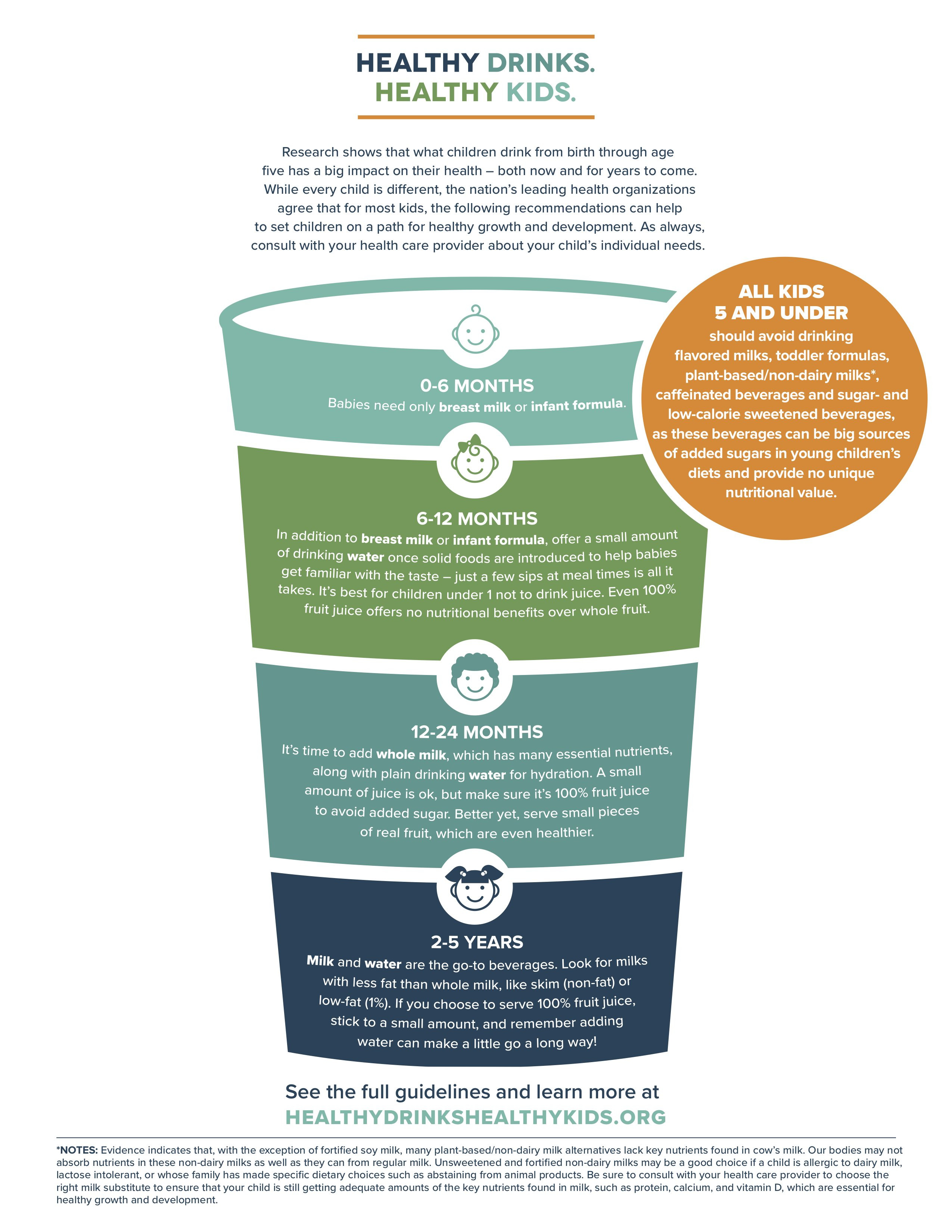The Lowdown on Kids' Drinks

A family of six (plus two adorable pets) needs a lot of groceries. So on the weekends, we divide and conquer to get all the essentials for the week.
My five-year-old son, Brady, and I love going to Trader Joe’s because they have free samples and great snacks for school lunch.
Last week, as we were walking into the store, Brady asked me “Please. Please can I have chocolate milk?”
“Nope,” I said.
“But I said please. Should I say it again?” Brady asked.
“You know the rules. Plain milk or water only in this family,” I said.
“This family stinks,” said Brady, followed by a familiar eye roll.
“Maybe. But we are going to be healthy,” I said.
Truth is, I have sometimes caved to chocolate milk requests. Who hasn’t? They are still getting dairy, right?
But new recommendations from four leading health organizations – the Academy of Nutrition and Dietetics, the American Academy of Pediatric Dentistry, the American Academy of Pediatrics, and the American Heart Association – say flavored milk is a no-no for little kids.
Milk and water are the go-to drinks, with 100 percent juice in limited quantities. Here is the lowdown on what kids should be drinking:
0-6 months: Babies need only breast milk or infant formula.
6-12 months: In addition to breast milk or infant formula, babies can have a small amount of drinking water once solid foods are introduced to help them get familiar with the taste.
12-24 months: It’s time to add whole milk, which has many essential nutrients, along with some plain drinking water for better hydration. A small amount of juice is ok now, but make sure it’s 100% fruit juice to avoid added sugar. Better yet, serve small pieces of real fruit, which is even healthier.
2-5 years: Milk and water are the go-to beverages. Look for milk with less fat than whole milk, like “skim” or “low-fat.” If you choose to serve 100 percent juice, stick to a small amount, and remember adding water can make a little go a long way!
However, every child is different and every family is different, so it is always important to talk with your pediatrician about your specific needs or circumstances or example, if your family follows a vegan diet or if your child has allergies you may need to follow different recommendations.
Research shows that what children drink – from birth through age 5 – can have a big impact on their health.
Establishing healthy patterns in early childhood prevents future health issues like cavities and diet related diseases like obesity and type 2 diabetes. But parents can’t do this alone. We need the support from policymakers across the country to ensure that there are policies in place to help all kinds grow up healthy.
These new recommendations can help inform:
Child care providers and afterschool programs as they work to provide healthy beverages
Policymakers as they consider changes to restaurant kids meals or to child nutrition programs like WIC, or make decisions on whether to tax sugary drinks
Manufacturers as they think about how they package and label thinks like juice for children
But at home, I still need to deal with Brady’s sweet tooth. How do I do this? I make other drinks seem as cool as his mohawk (see picture above). On this particular shopping trip, some seltzer did the trick.
